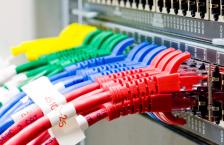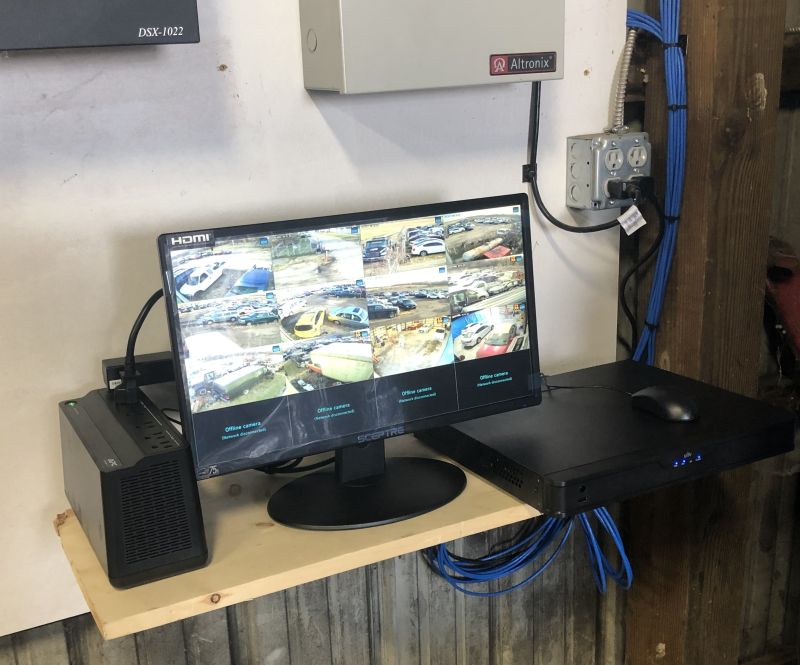An RF cable, short for radio frequency cable, is a specialized type of cable engineered to carry signals in the radio frequency range from a few megahertz (MHz) to several gigahertz (GHz). RF cables play a vital role in enabling seamless communication and connectivity in various wireless systems by efficiently transmitting high-frequency electromagnetic signals with minimal loss or distortion.
What is the Purpose of an RF Cable?
The key purpose of an RF cable is to maintain signal integrity when transmitting wireless signals between different components of communication systems. For instance, they connect antennas to transmitters, receivers, and other RF equipment.
As radio signals operate at very high frequencies, RF cables must be designed to handle such frequencies without excessive power loss or interference that can degrade the quality of transmission. Their specialized construction makes them suitable for carrying microwave and wireless signals efficiently from one point to another.
How Do RF Cables Work?
RF cables work by providing a closed transmission medium for radio frequency currents to flow through without radiating signals outward or letting external noise sources penetrate inwards.
They achieve this through a coaxial design comprising a central conductor surrounded by a tubular insulating layer, which is further surrounded by a tubular conducting shield and optional protective outer covering.
The central conductor carries the RF signal, while the outer shield isolates the cable from picking up unwanted external signals that may interfere with transmission. This shielding helps minimize signal loss as well as prevents RF leakage to the environment.
Key Components and Construction
RF cables have four key components in their construction:
- Inner conductor: The innermost layer made up of a solid or stranded wire, typically copper, that carries the RF signal current.
- Dielectric insulator: An insulating material like polyethylene or Teflon surrounding the inner conductor to minimize signal leakage.
- Outer conductor: A woven tubular shield of metallic braid or foil around the dielectric to isolate external noise.
- Protective jacket: The optional outermost layer of plastic or rubber for mechanical protection.
The choice of materials and dimensions is important in cable design to achieve the desired frequency response, power handling capability, and mechanical flexibility.
Types of RF Cables
There are several types of RF cables designed for various applications. Some key varieties include:
- Coaxial cables: The most common type with a single inner conductor centered inside an outer shield. Used for TV, radio, Wi-Fi etc.
- Triaxial cables: Similar to coax but with an extra shield layer for very high noise immunity. Used in sensitive RF measurements.
- Twinaxial cables: Contain two inner conductors instead of one. Used for balanced transmission applications.
- Waveguide cables: Hollow metal pipe functioning as a waveguide for ultra high frequencies above 18 GHz. Used in radar systems.
- Leaky feeder cables: Coax with tuned slots in the shield to radiate signals along the cable length. Used in tunnels, mines, buildings etc.
Key Parameters and Specifications
Some key parameters used to characterize RF cables include:
- Impedance: Typically 50 ohms or 75 ohms. Matched impedance minimizes signal reflection.
- Attenuation: Signal loss across the cable length. Lower is better.
- Frequency range: Cables are designed for specific frequency bands like VHF, UHF, microwave etc.
- Power handling: Maximum RF power a cable can transmit without damage.
- Shielding effectiveness: Ability to reject external interference.
- Bend radius: Minimum bending radius without degrading performance.
Understanding these specifications is necessary to select the right cable for an application. Parameters like attenuation and frequency response directly impact signal transmission quality.
Applications and Uses
Owing to their specialized nature, RF cables find extensive applications in various wireless communication systems:
- Broadcast TV/radio – Transmitting audio/video signals from studios to transmission antennas.
- Telecommunication – Connecting equipment in mobile base stations and networks.
- Wireless data networks – Structured cabling for Wi-Fi and Internet access.
- Avionics – Aerospace and navigation systems in aircraft.
- Military – Missile guidance, radar and satellite communication systems.
- Instruments – Connecting RF signal generators, analyzers, sensors etc.
- Automotive – In-car wireless connectivity and GPS navigation systems.
RF Cable Connectors
RF connectors are used to integrate coaxial cables with various transmitters, receivers, amplifiers and other RF components. Some common types are:
- BNC – Bayonet Neill-Concelman connectors used for test instruments.
- TNC – Threaded version of BNC suitable for vibrations.
- SMA – Subminiature connector for small, portable devices.
- N-Type – Larger threaded connector capable of high frequencies.
- F Type – Cheaper connector often used in TV and satellite installations.
Choosing connectors appropriately ensures low loss, stability and durability in cable connections – critical for maintaining signal quality in RF systems.
Conclusion
In summary, RF cables provide the vital connectivity in communication networks and electronic systems involving high-frequency wireless signals. Their coaxial construction minimizes signal losses and interference problems.
With growing applications in broadcasting, aerospace, 5G and IoT, RF cables continue to serve as the backbone enabling seamless and reliable wireless transmission with minimal errors or distortions. Understanding their working, specifications and applications is key knowledge for engineers working with radio frequency systems.






0